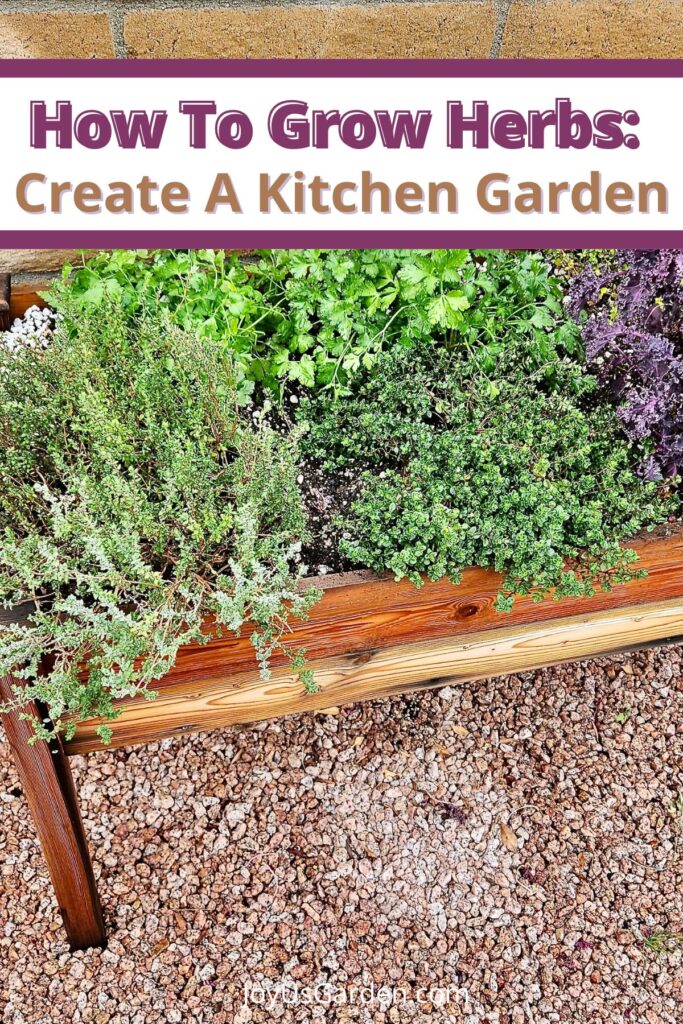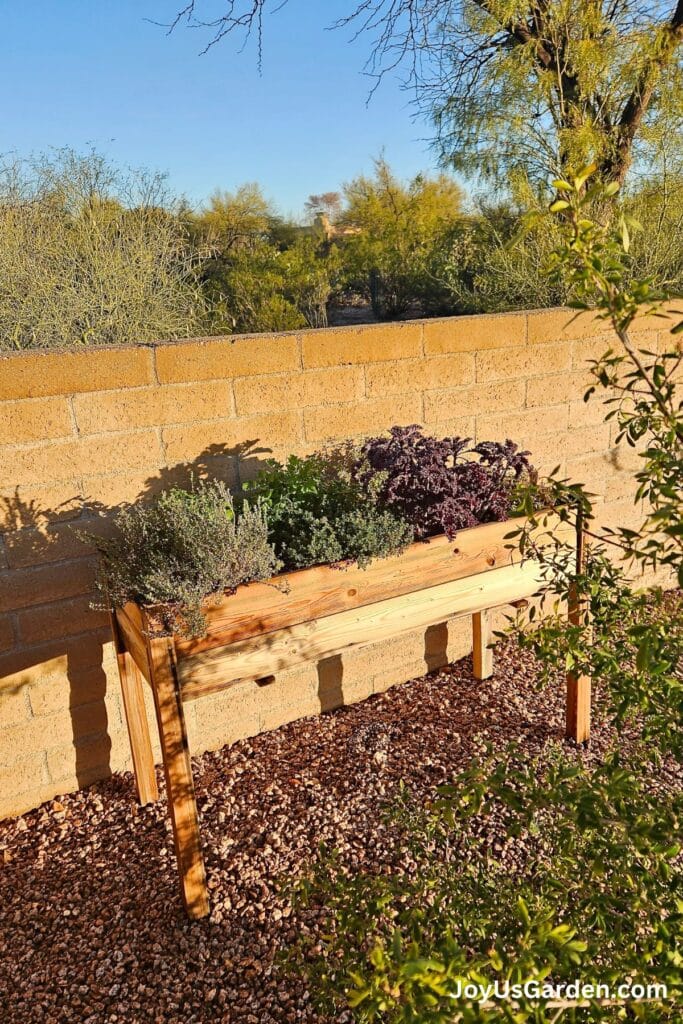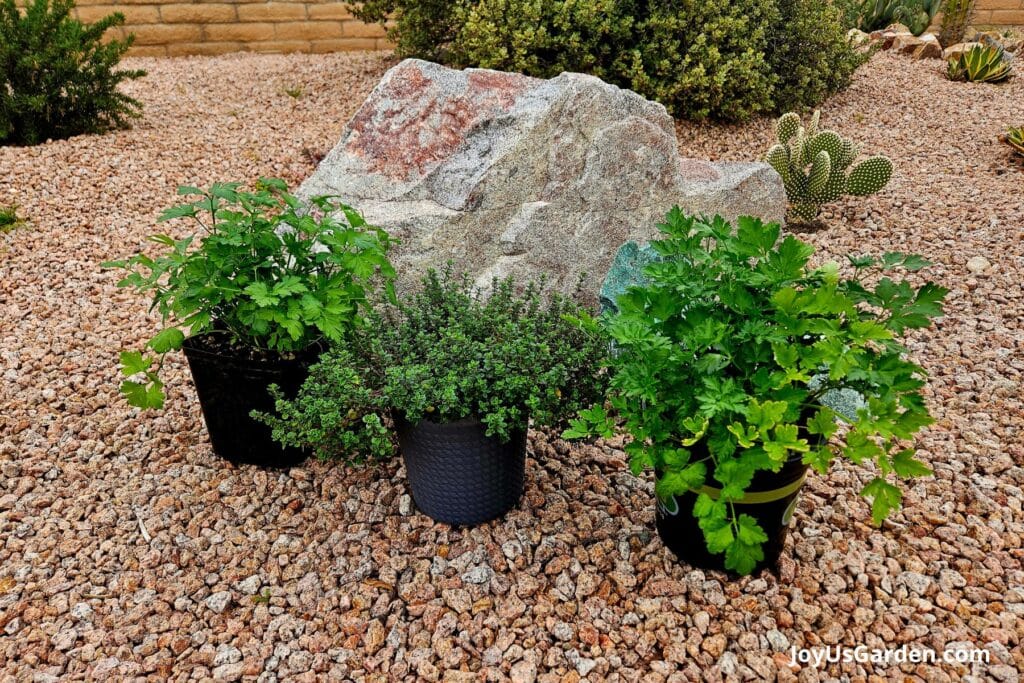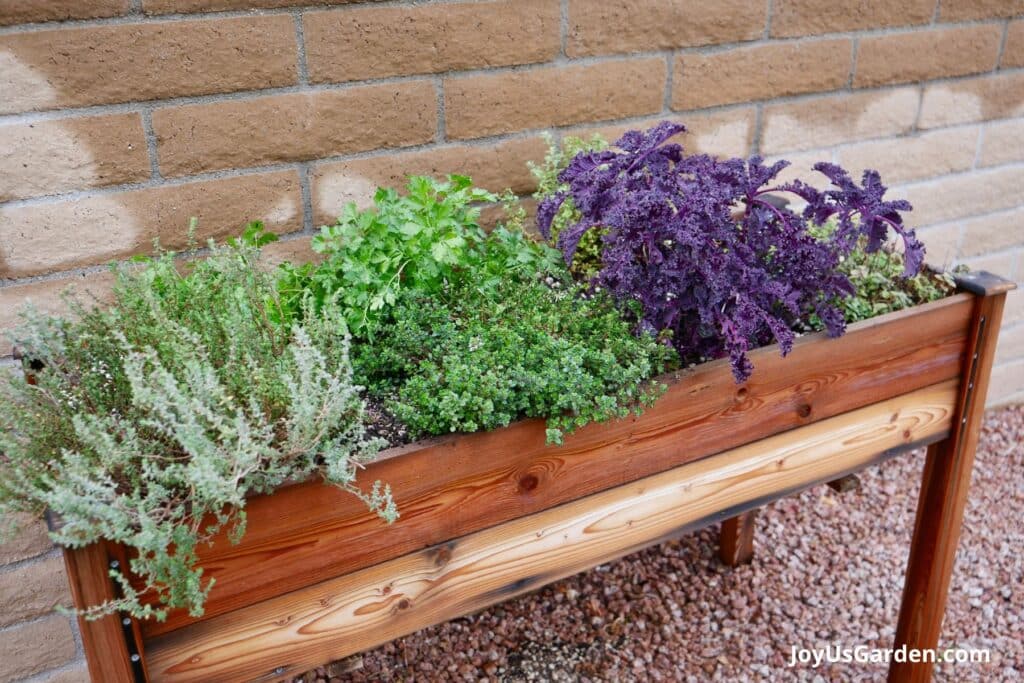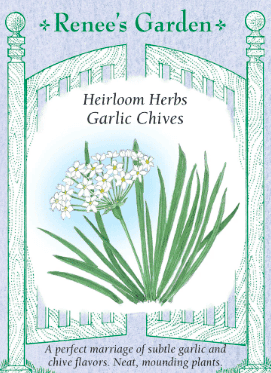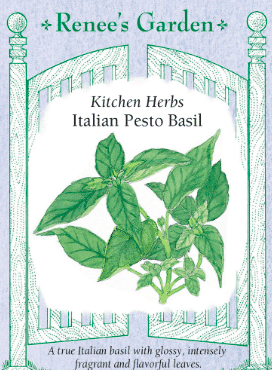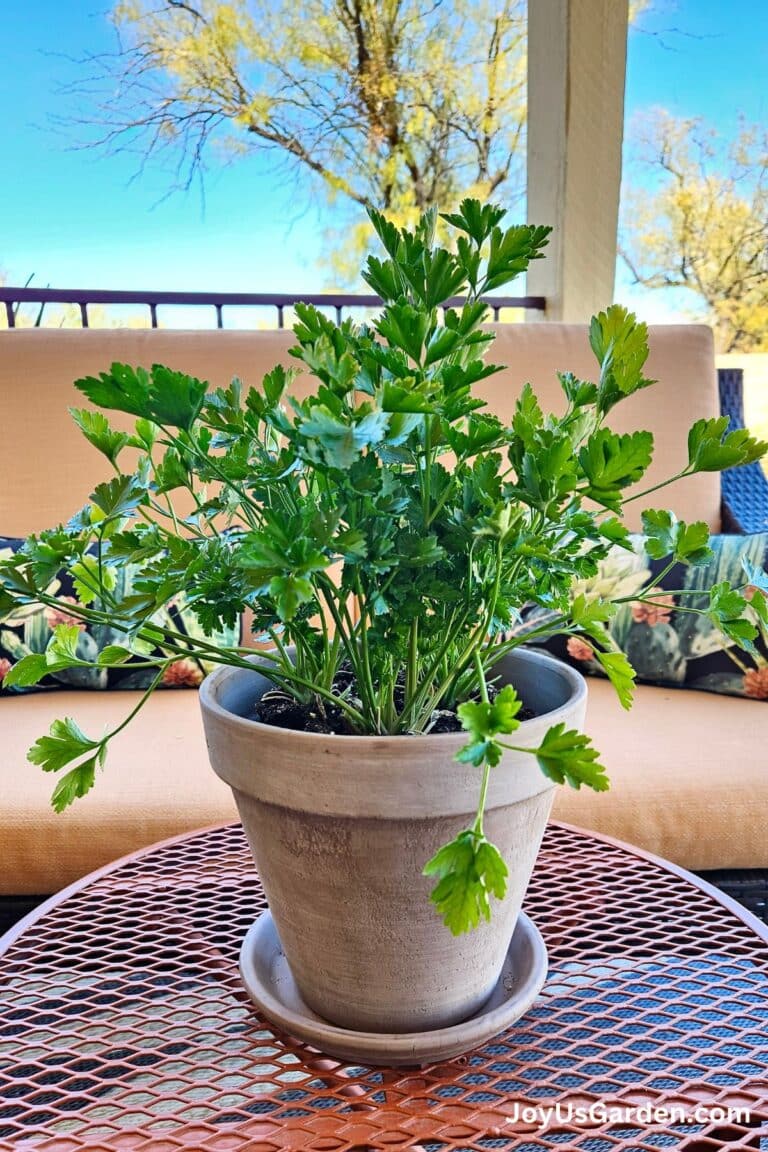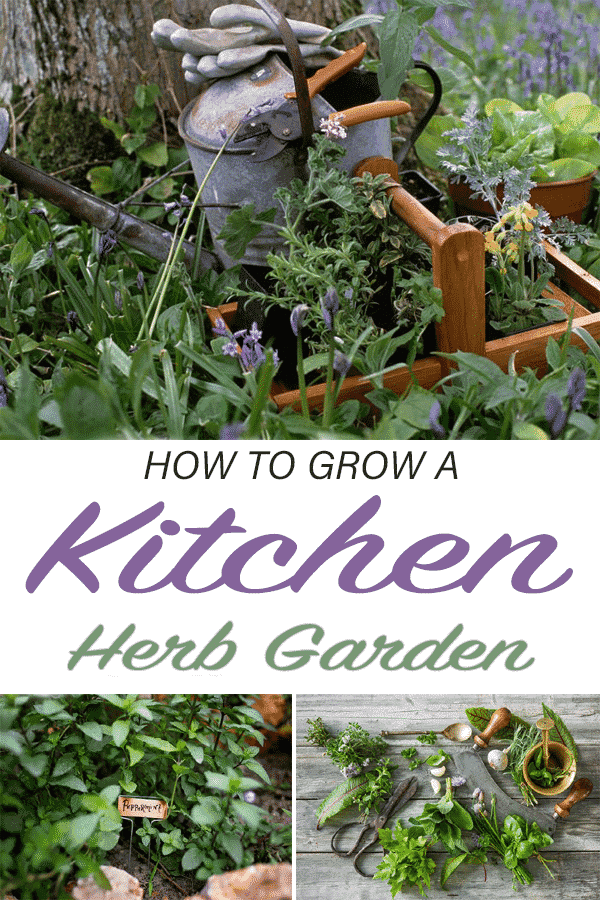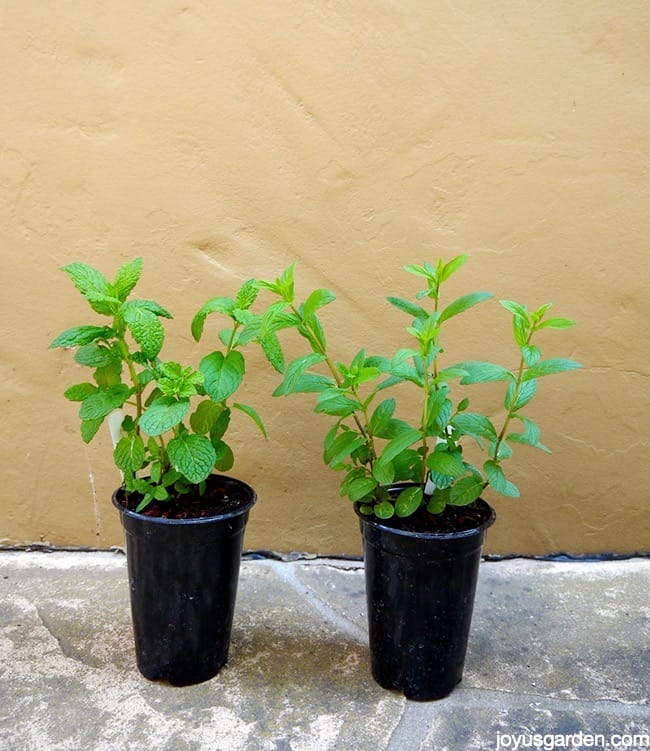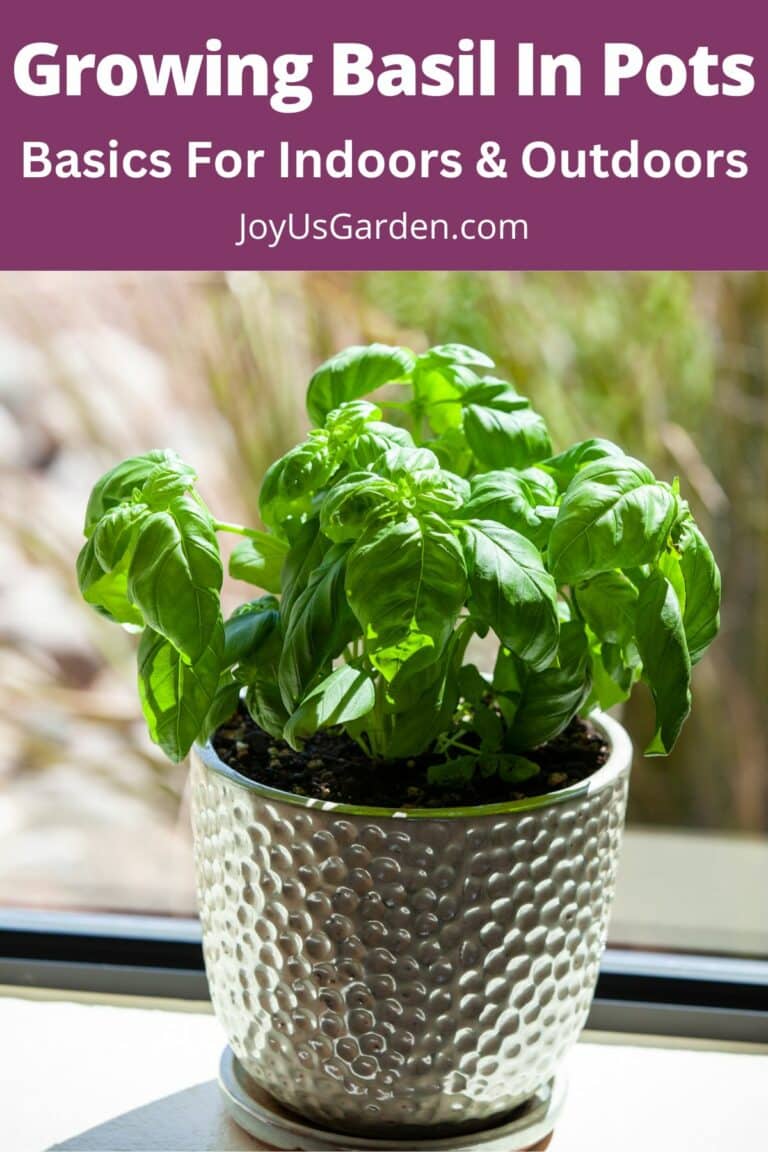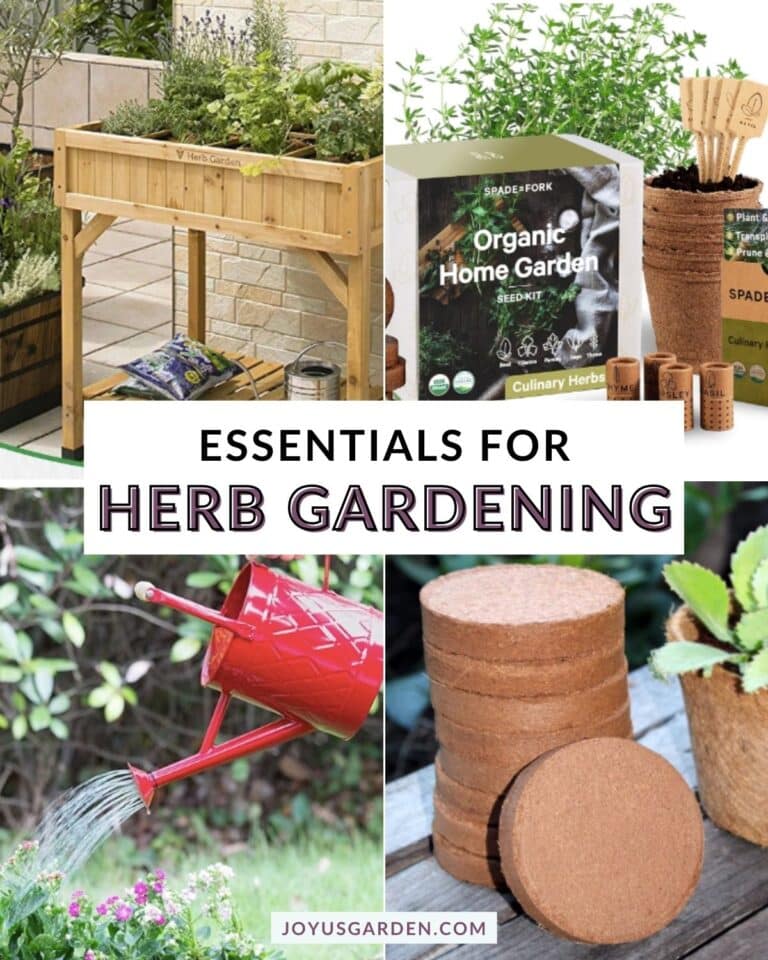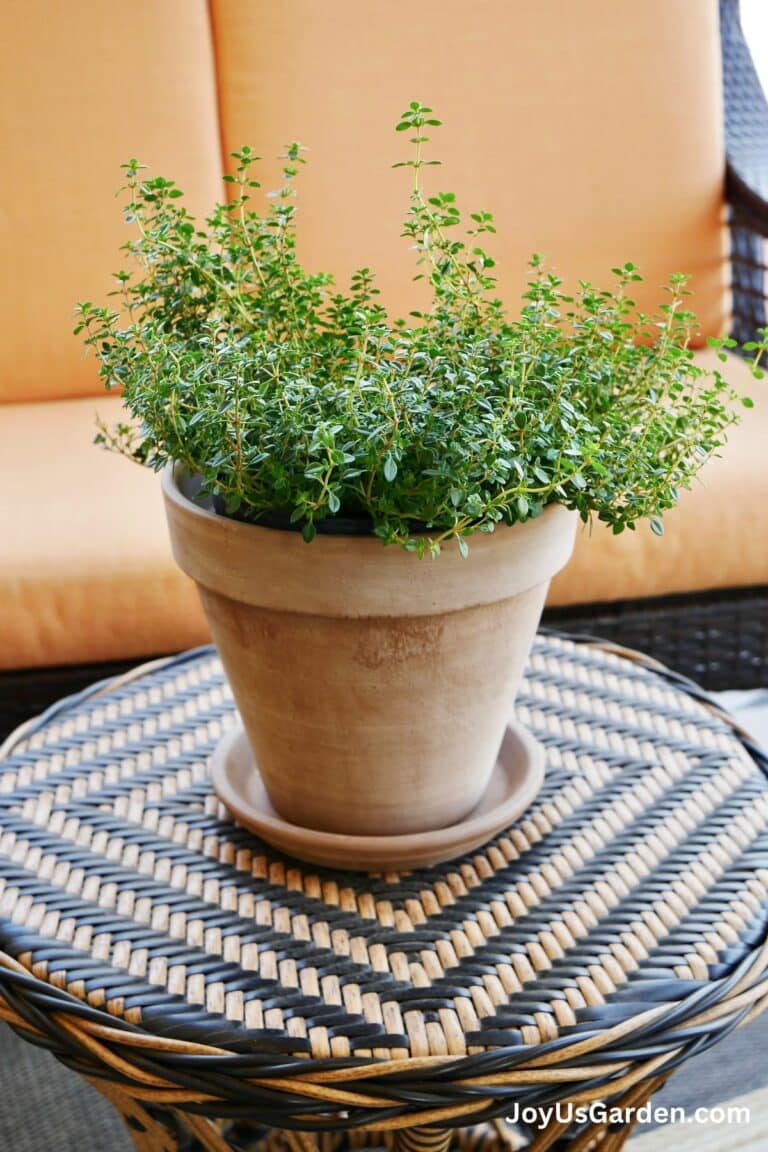Growing Herbs In Raised Beds: Create A Kitchen Garden
Most culinary herbs can be grown in pots or used as companion plants in a vegetable garden. But if you love cooking with fresh herbs and want to have a wide variety of herbs on hand for recipes and herbal teas, you may want to grow a dedicated raised herb garden instead.
Raised herb gardens have tons of aesthetic charm, but they’re also super functional and can streamline your gardening process. Growing annual and perennial herbs together in a raised garden bed allows you to fine-tune your watering and fertilizing schedules, extend your growing season, improve poor soils, and make harvesting a breeze.
If the thought of growing your own herbs has you intrigued, read on and discover all the tips you need to create your own herb garden!
This post may contain affiliate links, you can read our policies here.
Growing Herbs In Raised Beds

What Herbs To Plant In Raised Beds
All your favorite herbs can be grown in raised garden beds, including perennial and annual herbs. But different herb plants may need to be handled a bit differently depending on their growth habitat and care requirements.
Tender-stemmed herbs:
- Basil. Sweet basil and other basil varieties grow beautifully in a raised bed garden. Like other tender-stemmed herbs, basil grows best in consistently moist soil, and plants may benefit from afternoon shade in hot weather.
- Parsley. Curly and Italian parsley can both be kept in raised beds as long as they receive regular watering and lots of sun. However, these plants are biennial herbs, so you’ll need to plant new seeds every year or two!
- Cilantro. An excellent choice for the beginning gardener, cilantro is a fast grower that sprouts readily from seed, but cilantro plants will bolt in warm weather. Most gardeners plant cilantro in early spring when the weather is cool, but you can extend your cilantro harvest with succession planting and by sowing seeds in late summer for an autumn harvest.
- Dill. Like cilantro, dill loves cool weather, but it bolts in heat. Growing dill plants in partial shade and watering them regularly can slow down this process, but it’s a good idea to succession sow dill seeds too.
- Chives. One of the easiest herbs to grow, chives plants are resilient and can thrive in various growing conditions. For more flavor options, try out different varieties of chives, like garlic chives, and don’t forget to save some of the plant’s edible flowers to use as salad toppers!
Woody-stemmed herbs:
- Thyme. Like other Mediterranean herbs, thyme doesn’t need much water, but plants can still thrive in a raised bed. For best results, use well-drained soil and skip watering these plants if the soil is already wet.
- Rosemary. Rosemary plants are tender perennials that are only hardy in zones 8 and up. Gardeners in cooler areas can still grow rosemary by overwintering plants indoors or by sowing new plants each spring.
- Savory. Winter and summer savory make fine additions to raised beds, too. Just provide these plants with good drainage and full sun and harvest leaves often for a fuller harvest.
- Lavender. As with other woody herbs, lavender grows best in sandy soils, but you can grow lavender in raised beds by blending sand or perlite into your soil mix before planting.
- Oregano. Easy-going oregano is cold hardy, and sprouts quickly from seed, cuttings, or nursery starts as long as plants have proper drainage and at least 6 to 8 hours of sunlight. Marjoram is another option. It’s closely related to oregano, has smaller leaves, and is sweeter and not as pungent.
- Lemon verbena. A less commonly grown herb, lemon verbena makes a tasty addition to desserts and herbal teas. However, like rosemary, lemon verbena is not winter hardy, and it’s usually treated as an annual or overwintered indoors in cool areas.
- Sage. Culinary sages, like purple sage and common sage, make colorful additions to raised beds with excellent drainage and plenty of sunshine. Don’t worry if sage plants go to flower, though… bees love sage blooms!
Mints:
- Mint plants, including peppermint, spearmint, lemon balm, and catnip, are notoriously fast growers that can quickly overwhelm a small space. But with a bit of care, you can control these invasive herbs and savor their brightly flavored green leaves in teas and sweet treats. For even more flavor options, try unique mint varieties like chocolate mint and apple mint.
Herb Garden Raised Bed Layout
Herbs are relatively no-fuss plants, but not all herbs grow well together. For healthier herbs, keep these planting guidelines in mind when designing your garden layout.
- Build your raised bed on flat ground. This will save you the trouble of leveling out your soil later on. For even easier harvesting, locate your herb garden near your kitchen door!
- Group woody stemmed herbs together and keep them separate from tender-stemmed herbs. Herbs with woody stems don’t need much water, while tender herbs need consistently moist soil.
- Separate out plants in the mint family so they don’t drown out slower growing herbs. You can do this by sowing mint plants in their own raised beds, burying a raised bed divider, or sowing mint in small pots sunk into the soil.
If you’re a beginning gardener, you’ll want to check out this herb gardening basics guide.
Types Of Raised Beds
When most people think about raised bed gardens, they envision rectangular structures built with ledger board or other non-treated wood. But you can make raised beds out of other materials. Premade raised beds constructed out of galvanized steel are popular, as are small, raised beds on wheels and containerized raised beds with long legs for ergonomic gardening.
If you don’t have a lot of space, experiment with vertical gardening by growing plants in towers or plant stands. Or use low maintenance, self-watering raised bed planters, which contain a deep water reservoir and provide moisture to plant roots even when you forget to water.
Budget-minded gardeners may also want to upcycle food-safe containers or use grow bags as raised beds. Just make sure that all planting containers have plenty of drainage holes to prevent waterlogged roots.
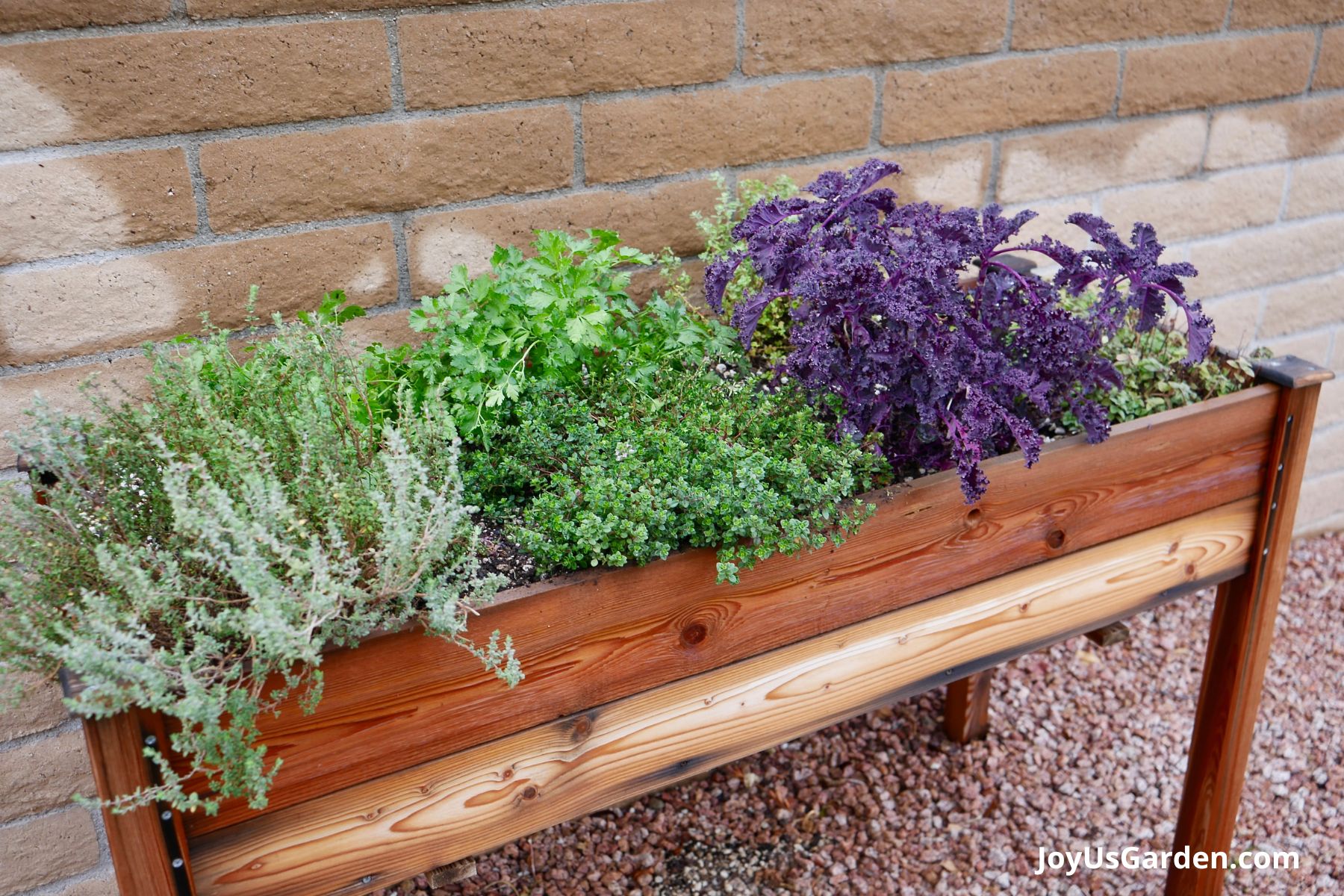
Exposure
Most herbs are full sun plants that won’t grow in poor lighting, so it’s important to choose the perfect spot for your raised bed. Locations that receive at least 6 to 8 hours of direct sunlight daily work for most herbs; however, dill and cilantro can be grown in partial shade if you want to keep them from bolting early.
Aside from providing bright sun, it’s also wise to orient your raised beds in a north-to-south direction and plant the lowest growing herbs towards the south. This will prevent shorter plants, like cilantro and parsley, from being overshadowed by taller herbs!
Soil & Amendments
Standard garden soil is not a good choice for raised bed gardening as it tends to be dense and drains poorly in containers. Instead, use a raised bed gardening mix or make your own DIY soil blend by mixing together 1 part compost and 1 part top soil (or a soil-less potting mix).
Once you’ve added your well-draining soil to your raised bed, blend in some compost or worm castings if you think your plants could use an extra nutrient boost. A handful or two of compost or castings can be mixed into each planting hole, or you can layer an inch or two of these products on the soil and stir them into the top 6” of the substrate.
After the initial application of compost, apply compost annually (and fertilizer as needed) to refresh your raised bed soil and keep your herb garden lush for years to come!
Other posts that might interest you are 22 herbs for cooking, 10 best herbs to grow indoors, & top 13 herbs for full sun.
Maintenance
Raised bed gardens need approximately the same level of maintenance as inground gardens. Just add an annual application of compost or other organic matter to the soil and apply mulch in spring or fall to shelter the soil from harsh winds and weedy growth.
Aside from soil maintenance, you may need to freshen up your raised bed structure from time to time. This can include: painting the raised bed frame, tightening up screws, scraping away rust, or replacing old ledger boards if they begin to decay.
One thing to remember about raised bed soil is that it warms up quickly in spring but doesn’t hold water, as well as inground garden soil. As a result, plants grown in raised beds usually need to be watered more often than herbs planted directly in the ground.
If you don’t want to worry about watering, one simple solution is to install an automated drip line system, which will do all of your watering for you!
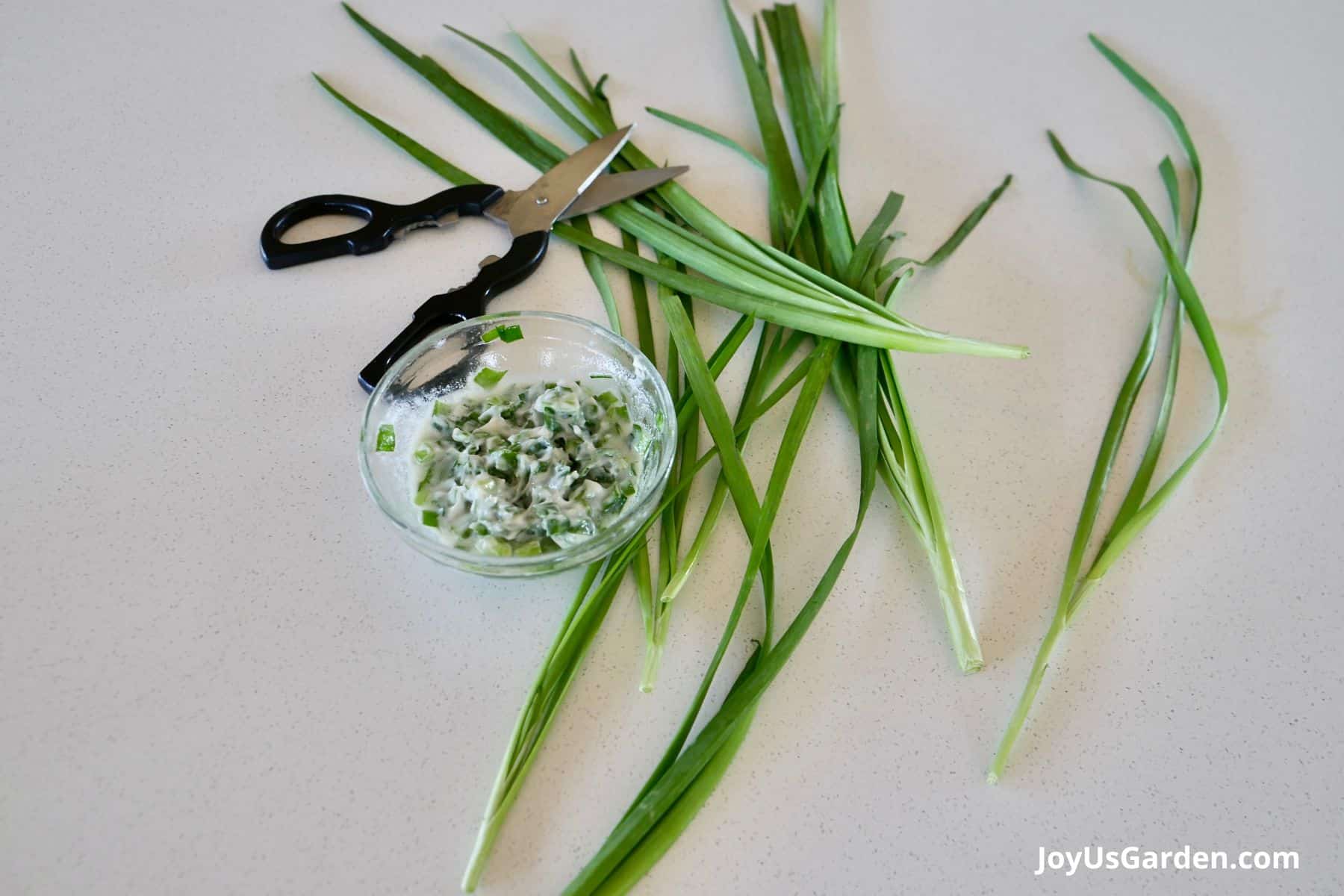
FAQ’s Growing Herbs In Raised Beds
Unlike root vegetables, most herbs don’t have deep roots, and they don’t need deep soil to grow. Raised beds that are at least 12” deep should provide plenty of room for herb plant roots to spread out.
Mint plants are aggressive growers, so it’s best to separate these plants from other types of herbs. Keeping tender-stemmed herbs away from woody-stemmed herbs is also important since these two herb types have different watering requirements.
If you’re starting a new raised bed from scratch, consider lining the bottom of your raised bed with several layers of newspaper to block out weeds. Then, fill the raised bed with a well-draining soil mix, blend in some compost for extra nutrients, and start planting!
Looking for more on growing herbs? Be sure to check out our herbs category.
Conclusion
Growing a raised bed garden can take a bit of work at first, but it’s worth it. Raised beds have a classic elegance, but they can also be used to improve gardens with poor or clay soil, bad drainage, and rocky earth.
Many edible crops, including most vegetables, can be grown in raised beds, but these structures are particularly useful for herbs. Herb plants are relatively compact and simple to keep, which makes them easy to fit in small, raised beds or even a container garden.
If you’re looking for a new garden project this year or you just want to grow more organic herbs for your family, add a raised bed or two and keep your kitchen flush with the freshest, homegrown herbs!
Happy gardening,
-Lauren
This post may contain affiliate links, you can read our policies here.
